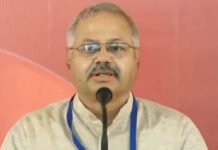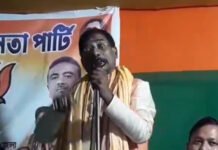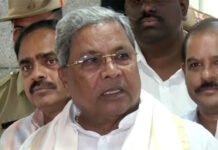 {Arun Jaitley**,,}
{Arun Jaitley**,,}
Leader of Opposition, (Rajya Sabha)
The results of the 2004 general elections indicated that the national election results were the net aggregate of the results of all states. There was no all-India pattern. Neighbouring states had voted in opposite directions. The 2009 general election results, however, presented a different analysis. In most parts of the country there was a visible pro-incumbency trend. The Congress did better than its otherwise natural strength in the states. The urban constituencies voted overwhelmingly in favour of the Congress. The performance of the Congress in states like Haryana, Delhi, Uttar Pradesh, Madhya Pradesh, Rajasthan and Gujarat was much better than its strength in the legislative assemblies of those states.
As we approach the next general elections some significant changes have taken place. The very acceptable persona of the Prime Minister, Manmohan Singh, in 2009 has been adversely affected. Corruption, indecisiveness, weak leadership, price rise and the terrible state of the economy have created a huge anti-incumbency environment. The Congress has withered away in Andhra Pradesh on account of a political split. It has lost partners in West Bengal and Tamil Nadu on whom it had piggy backed to success in 2009.
While disillusioned with the Congress, the charge against the BJP was that it had not been able to put its own house in order. Its galaxy of leaders was regarded as a liability rather than an asset. Fortunately, the party has now started putting its house in order. The possibility of the party contesting under one leader is now real. The BJP had won 12 seats in Bihar in the last elections where its alliance has recently suffered a setback. It has an opportunity to improve upon this figure. In Karnataka, the party has to factor in electoral realities rather than internal imbalances.
With the two principal national parties without some of their regular allies, smaller and regional parties smell an opportunity for a Third Front. The Third Front has been experimented with on several occasions in India. It is a failed idea. There is no single party in the Third Front that is capable of winning a reasonable number of seats in Parliament giving it the strength to anchor a coalition. The anchor of a coalition necessarily has to be a party with over 150 seats in the Lok Sabha. Otherwise a coalition government would inherently be unstable. The Third Front has no one composite group. The DMK and the AIADMK, the Trinamool Congress and the Left, the Samajwadi Party and the BSP, the JD(U) and the RJD obviously cannot be members of the same front. They occupy diametrically opposite spaces in their states. A very large number of regional parties also occupy the non-Congress space within their states. They would run the danger of losing that non-Congress identity if they were to align in a post-electoral environment with the Congress.
The political issues which are evolving in the run-up to the general elections are loaded against the Congress. Lack of decisiveness and firm leadership is the cause of popular concern. Never in history has the institution of the prime minister been so severely belittled. The prime minister is not regarded as either the leader of the country or of his own political party. The economic situation in the country is worrisome. The price rise has affected every citizen adversely, more so the middle classes and the weaker sections. Job creation has suffered. There has been a reverse flight of investment within the country. Business confidence is running low. Once perceived as a ‘dream team’ to handle India’s economy, it has produced a nightmare. Corruption has destroyed the credibility of the UPA government. From the Commonwealth Games to the 2G scam, the coal block allocations and the recent Railgate, the moral agenda is loaded against the government. The only relief to the government is on account of the pliability of the Central Bureau of Investigation (CBI). In recent years the CBI’s credibility has suffered a huge setback. The more the CBI is misused in relation to Gujarat, the more will Narendra Modi’s support base be further consolidated. A potential loser can never use the CBI for vote gathering.
The Congress now looks upon its new leader as a possible saviour. Its new leadership is a creation of the dynasty. The problem with dynastic leadership is that it is based on the charisma of families and surnames rather than on proven ability. Dynasties function only on the strength of charisma. They relish creating a mystique around them. Their political ability, administrative competence, leadership and decisiveness are unknown to the country. Are Indian voters aware of the economic vision of the scion of the ruling dynasty? Are they aware of his views on how to tackle the Maoist problem, the issues related to Jammu & Kashmir and Indo-Pak relations? His silence on issues of corruption is worrisome. His economic vision is unknown. Dynastic parties are only as strong or as weak as the potential of the current generation of the dynasty.
Irrespective of whether the two principal parties declare their candidates for the prime ministership in the next elections, the de-facto leaderships are becoming clear. Besides the conflicts of parties and ideologies, the next elections could also be a contest between personalities. The nature of the contest would be more presidential. In the 2009 general elections, the Congress and the BJP shared 323 Lok Sabha seats among themselves. This figure is not likely to reduce in the forthcoming elections. With anti-incumbency working against the Congress, the party’s alliance being in a shambles in several states and the near sweep situation of 2009 in urban India likely to be reversed, the odds are loaded against the Congress. The possible presidential-type contest between the two emerging personalities will make it worse for the Congress. The possibility of one of the two major parties forging way ahead appears real. And this time it won’t be the Congress.
*******

**Arun Jaitley – Leader of Opposition (Rajya Sabha)
* Disclaimer: The views expressed by the author in this feature are entirely his own and do not necessarily reflect the views of INVC.
















